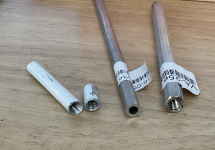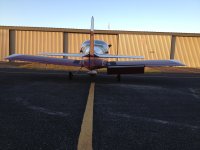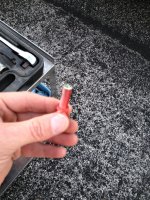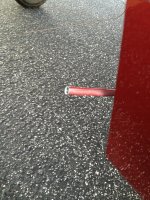Dwg 33 calls for 2 flap pushrods made from AT6-058X5/16. Only piece I have is 9" long whereas dwg calls for 2 pieces 4 7/8" long? Even Van's "list" of kit parts on his web site specs a 9" piece called: FLAP PUSH ROD 4/6/7/8
AT6-058X5/16X9. Can these be 4 1/2" rather than 4 7/8" as called out on dwg 33, or should I order another piece of FLAP PUSH ROD 4/6/7/8
AT6-058X5/16X9?
TIA,
AT6-058X5/16X9. Can these be 4 1/2" rather than 4 7/8" as called out on dwg 33, or should I order another piece of FLAP PUSH ROD 4/6/7/8
AT6-058X5/16X9?
TIA,





